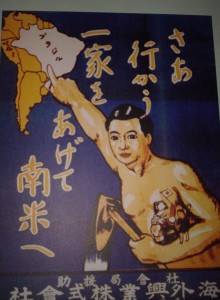by Dorie Perez
The subtle differences between the terms inversion, subversion and perversion, presented by seminar discussant Matthew Kaiser, are usually glossed over in speech, terms used interchangeably to mean “othering” or change as a process of fragmentation. The idea of inversion as a movement, often smaller-scale acts than violent political upheaval, is an interesting take on social change and something Susan Amussen presented in her analysis of Early Modern historical works in late September 2014.
Amussen presented what will be one chapter of a book tentatively called “Turning the World Upside Down: Gender, Culture and Politics in Early Modern England,” which builds on the work of her late husband, the historian David Underdown. Continuing the topsy-turvy theme of the Merced Seminar in the Humanities series for Fall semester 2014, she writes of “unruly women” and other deviants who dared to challenge convention in Elizabethan England. “Mannish-women and womanish-men,” patriarchs that failed to uphold their place as lord and master, among other kinds of usurpation of male authority were targets of John Swetnam, a pamphleteer in 1640s England whose social critique often morphed into full-scale misogyny. Pamphlets were the blog post of their era, read and responded to by intellectuals of all stripes; Swetnam’s back and forth argument with other writers, including quite a few female intellectuals, has held up as an example of the transhistorical tension between idealized expectations of womanhood and the subversive play of gender politics in an increasingly changing world, continuing today unabated.
The global social politics of the Early Modern era were present in the Shakespearean play The Taming of The Shrew (1592), a prime example used in Amussen’s analysis of subtle inversions of gender roles that fueled a discourse of inversion from within a dichotomized world of male/female, rich/poor, and young/old – dichotomies first discussed by Mikhail Bahktin in Rabelais and His World (1965). A royal (or rather, royal-adjacent) sex scandal involving the dissolution of Frances Howard’s marriage to the Earl of Essex in 1613 and subsequent remarriage to the Earl of Somerset fueled fears of subversive female comportment, especially when the perversions of witchcraft were said to be involved. Witchcraft, excessive interest in fashion and makeup, as well as sexual desire, were acts by women to subvert their roles at home, in the streets and at Court. Dress was the process by which identity was encoded, and through that signification, the inscription of idealized roles and behaviors. Any subversive activities strayed into the grey area between the normative and empirical Woman, according to a Foucauldian analysis, destabilizing social norms by way of inversion, perversion and subversion.
Dress, and therefore, womanhood, came under intense scrutiny in the Jacobean literary landscape, where any sense of otherness – foreign silks, mystical allusions, ostentatious luxury- was regulated by social stratification. Yellow hoods, and the color itself, were the sign of prostitutes and other fallen women, using the identifiers of the day as an inverted ladder to another social role available to them. The gender boundaries Amussen analyzes are clearly bounded entities regulated by social interaction and royal decree, yet somehow simultaneously inverted on a daily basis in regular acts of autonomy. They, in turn, set the stage for social relationships and tensions that then spill into the geopolitical arena. Amussen’s analysis ultimately concerns these genre-crossing “disorderly women” and their “failed patriarchs,” by whom social norms were transgressed, even as they worked to upkeep them.



